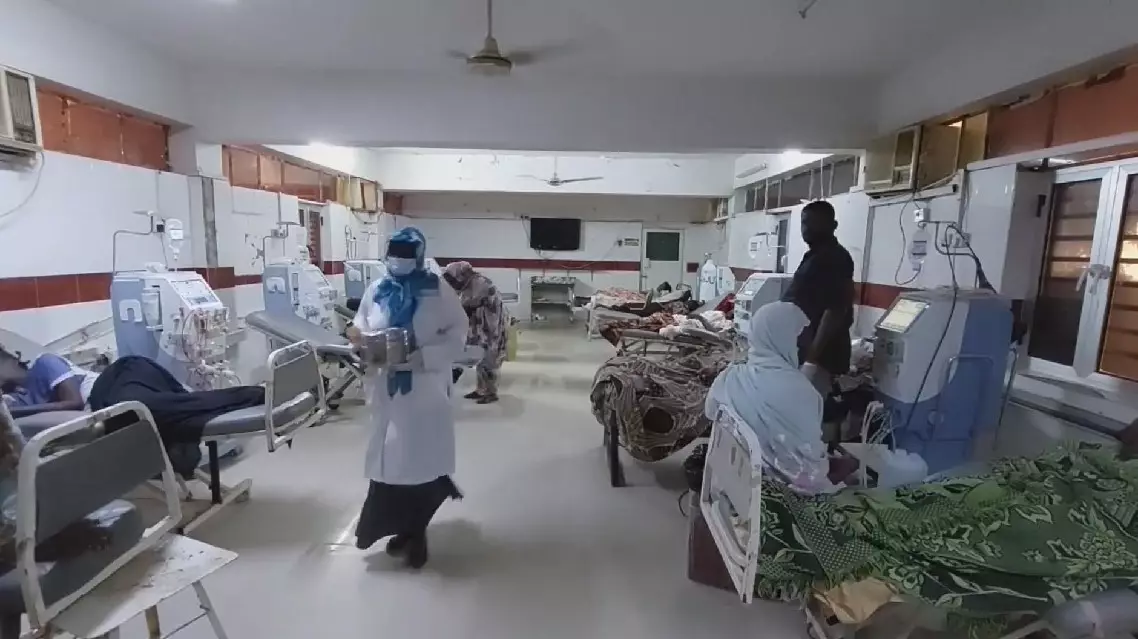The armed conflict that broke out in mid-April 2023 has reduced Sudan to unprecedented health, with more than 60 medical workers killed and incurring over 11 billion U.S. dollars losses to its healthcare system, the country's Health Minister Haitham Mohamed Ibrahim said on Monday.
The 20-month armed conflict has placed an unbearable strain on Sudan's healthcare system, which is now on the brink of collapse.
Click to Gallery
Prolonged conflict reduces Sudan to severe health crisis
Prolonged conflict reduces Sudan to severe health crisis
Prolonged conflict reduces Sudan to severe health crisis
Prolonged conflict reduces Sudan to severe health crisis
Prolonged conflict reduces Sudan to severe health crisis
During the conflict, many hospitals have been attacked by militants or used as military facilities. Over 200 ambulances and medical vehicles have been looted, along with more than 600 million U.S. dollars worth of medicines and medical supplies, according to Ibrahim.
Sudan's Health Ministry has rebuilt and reopened some hospitals, but they are still facing severe financial shortages. Rebuilding the national healthcare system is estimated to cost at least 4.7 billion U.S. dollars, but what is acquired now is barely 20 percent of the required funding, the minister added.
Sudan has been ravaged by the deadly conflict between the Sudanese Armed Forces (SAF) and the paramilitary Rapid Support Forces (RSF) since April 15, 2023.
The conflict has resulted in more than 28,700 deaths and displaced over 14 million people, either inside or outside Sudan, according to the latest estimates by international organizations.

Prolonged conflict reduces Sudan to severe health crisis

Prolonged conflict reduces Sudan to severe health crisis

Prolonged conflict reduces Sudan to severe health crisis

Prolonged conflict reduces Sudan to severe health crisis

Prolonged conflict reduces Sudan to severe health crisis
China's Ministry of Ecology and Environment released 38 outstanding cases in the construction of "Beautiful Rivers and Lakes" on Tuesday.
These 38 exemplary cases highlight the efforts of local authorities in preserving the surrounding environment, water resources, and water ecology, while maintaining harmony between humanity and water bodies.
Among these, the Qinghe River in Beijing and the Mangdaohe River in Yangzhou City, east China's Jiangsu Province, stand out for their focus on a coordinated approach to water resource protection. These efforts aim to establish a new paradigm for preserving the water ecological environment.
In Xuancheng City, east China's Anhui Province, and Foshan City, south China's Guangdong Province, local authorities have transformed ecological advantages into economic benefits by exploring the value of ecological products. This has promoted high-quality development along the Qinggejiang River and the Gaominghe River.
Additionally, the Tongbohe River, jointly governed by Chongqing Municipality and Sichuan Province in southwestern China, is recognized for its integrated governance system that connects the upstream and downstream sections of the river.
This year, the Ministry of Ecology and Environment announced that 2,573 water bodies under national monitoring have been included in the "beautiful rivers and lakes" initiative. It is estimated that 40 percent of these water bodies will meet the program's requirements by 2027, featuring clear waters, green banks, and abundant fish in a harmonious living space. Since the launch of the "beautiful rivers and lakes" initiative in 2021, a total of 94 outstanding cases have been highlighted.

China highlights 38 exemplary cases in Beautiful Rivers, Lakes project














